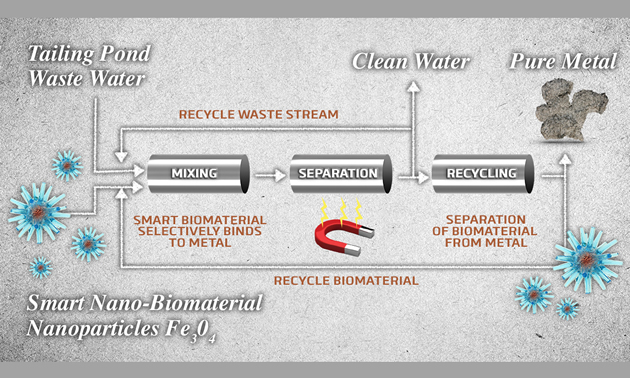Ingenuity in extracting rare earth elements
The issue of extracting rare earth elements is being tackled by Ingenuity Lab, an Edmonton-based scientific organization.

This diagram demonstrates Ingenuity Lab's process of extracting rare earth elements. — Photo courtesy of Ingenuity Lab
Most people have heard of rare earth elements (REEs) and our growing appetite for them because of their use in electronics and other technology. What is a little harder to understand, however, is the process of mining REEs and the environmental challenges that presents.
Since REEs exist as a mixture in mineral ores, their beneficiation and separation into individual metals requires unique processes. Depending on the chemical form of the metal, different compounds are necessary during beneficiation steps to convert minerals into metal nitrates, oxides, chlorides and fluorides, which would be further extracted individually. Furthermore, this process must be followed with solvent separation to obtain individual metals. These excessive steps not only increase the production cost and energy consumption but also decrease the yield and generate environmental pollution due to the use of various chemicals and organic solvents. -Ingenuity Lab
It’s an issue that is being tackled by Ingenuity Lab, an Edmonton-based scientific organization that focuses on nanotechnologies in several fields, including bio mining. Using the tagline “What if,” Ingenuity Lab seeks solutions to some of our biggest environmental problems. Regarding REE extraction, Ingenuity Lab has been receiving attention for promising advancements.
Specific/targeted separation methods hold the most promise in terms of increased purification yields and decreased cost. In the case of REE separations, utilization of peptides with specific binding affinities to different REE could provide the ultimate solution. Ingenuity Lab is working on generating smart biomaterials composed of inorganic binding peptides coated on the core of magnetic nanoparticles. These smart materials will expose two functions: first they will recognize and bind to a specific REE through the peptide region, and they will migrate to magnetic field by the help of iron oxide core. This will allow the smart material to purify an individual metal from a mixture without excessive solvent extraction, filtration and concentration steps. -Ingenuity Lab
To learn more about Ingenuity Lab’s research, or the challenges of REE metals, visit this web post.






Comments